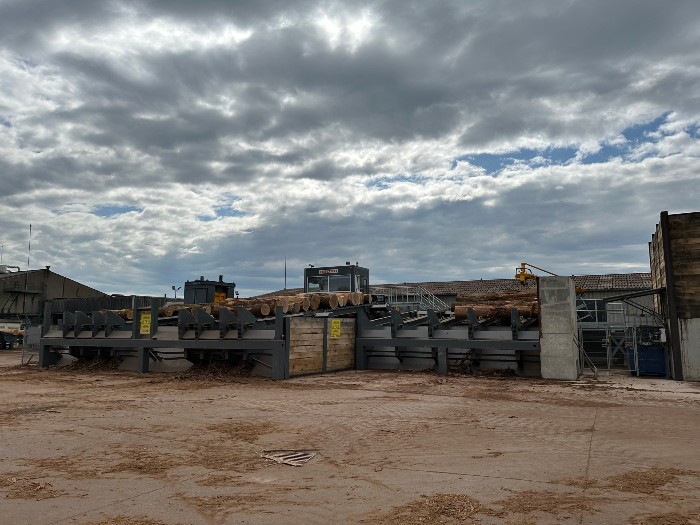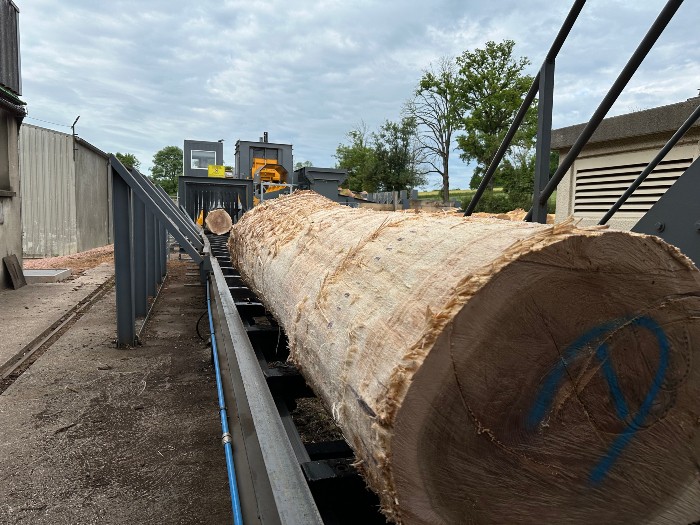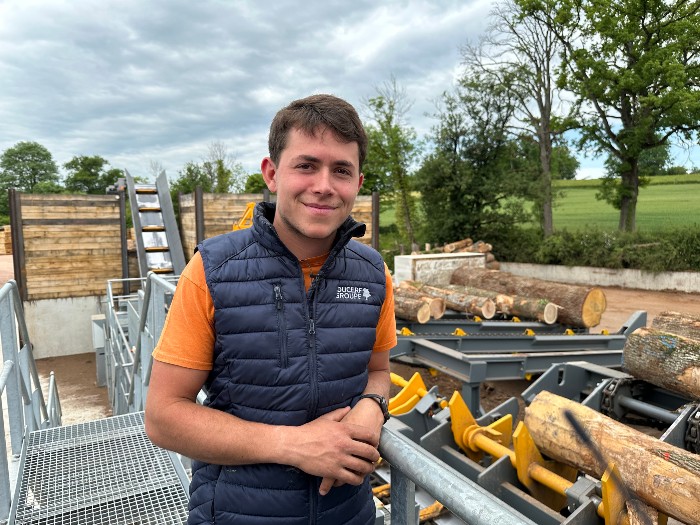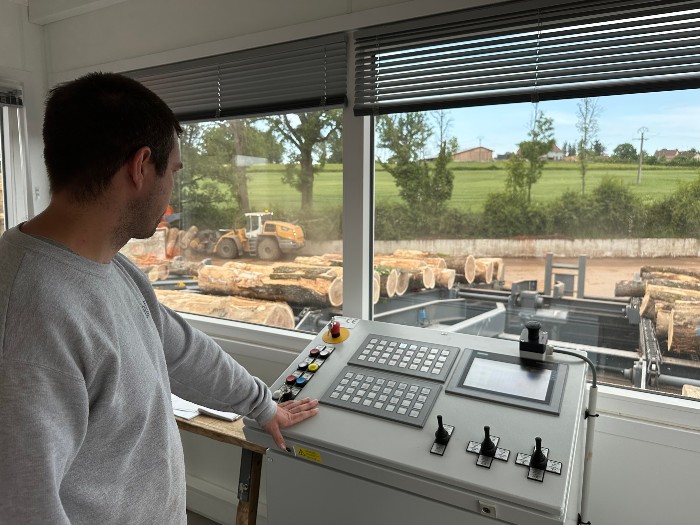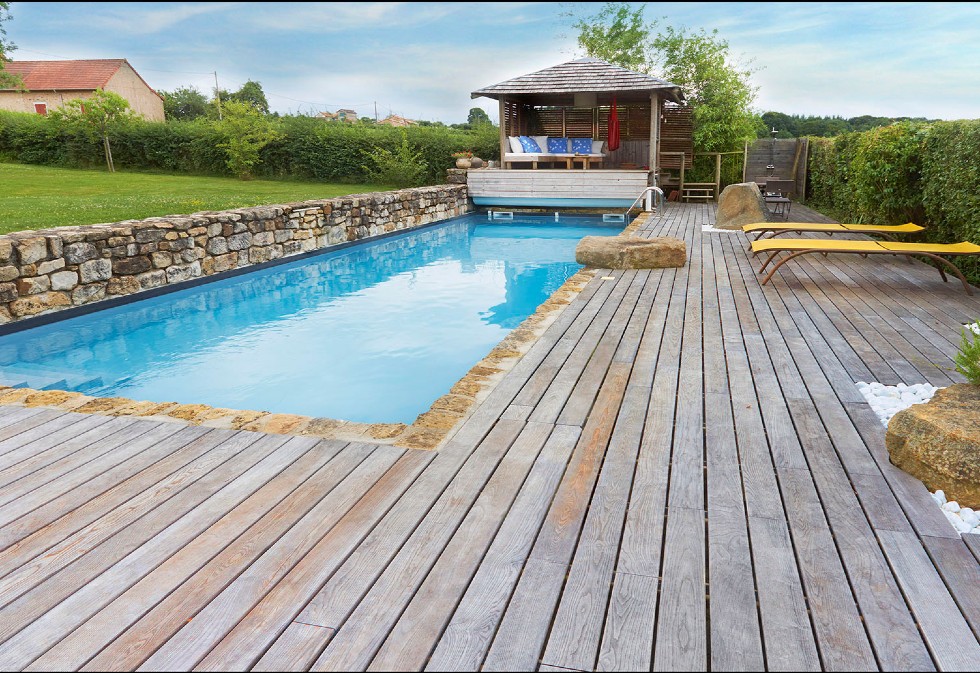A New Automated Debarking Line to Accelerate the Modernization of Ducerf Sawmill — A New Milestone!
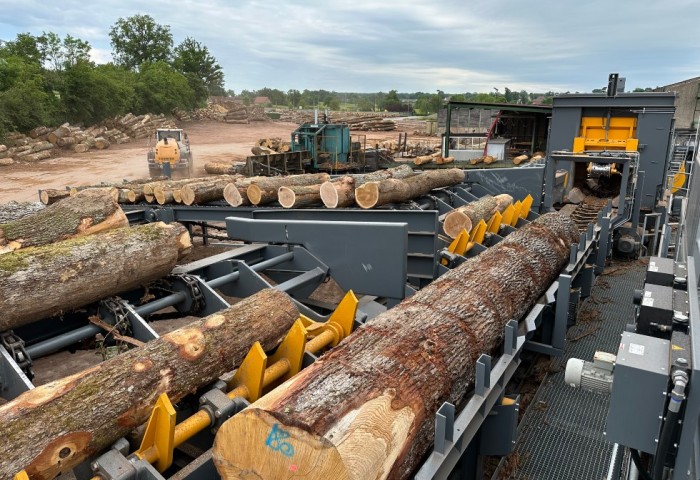
As part of its ambitious €50 million industrial modernization plan, the Ducerf Group is reaching a major strategic milestone. How? By commissioning a state-of-the-art automated debarking line at its Vendenesse-lès-Charolles (71) site. Supported by the France 2030 program, this installation represents a €2.7 million investment — the largest ever made by the Ducerf Group for a single piece of equipment. Designed to strengthen the company’s industrial innovation and expertise, it enables smoother, more reliable — and more sustainable — production.
Something has changed.
On the decks of the Vendenesse-lès-Charolles sawmill, hardwood logs now wait patiently in a perfectly orchestrated, now automated process. Since the beginning of the year, a next-generation debarking line has been installed at the heart of Ducerf Group’s historic site — an impressive machine by its size, its precision… and the changes it brings.
“The previous line was over 20 years old. It was time to invest in a more efficient tool, capable of supporting our increased capacity and market expectations,” explains Jean-Marie Ducerf, Deputy Director of the Group. “The project involved up to 12 people over more than six months.”
Conceived as the backbone of the site, this line reflects the Group’s commitment to combining modernity, efficiency, and process control — all in service of the Ducerf quality standard.
A Strategic Lever to Drive Industrial Performance
A major shift: the brand-new debarking station can now handle logs up to 1.10 meters in diameter, compared to 80 to 90 cm previously. Its storage capacity has been optimized — multiplied by ten — from 6 to 60 logs. Thanks to automated scheduling, logs are now sorted according to their destination (timber planks, sawn timber, etc.), ensuring continuous feeding of each station in the sawmill. The result is increased efficiency, responsiveness, and productivity.
“This investment allows us to increase our production capacity and better meet our customers’ needs,” adds Jean-Marie Ducerf. Productivity gains are estimated at around 10%.
Improved Working Conditions for Teams
One of the project’s key benefits? Operator comfort — a core focus of this development. The new control cabin is soundproofed, air-conditioned, and ergonomically designed, providing a calmer and safer working environment, whatever the conditions. Integrated safety systems (interconnected emergency stops, controlled access, and automatic shutdown systems) also improve risk management on site.
“It’s truly satisfying to work with such a modern, advanced tool,” says Hugo Dupont, team leader. “It’s good for production, for operators, and for the end customer,” he adds enthusiastically.
Increased Precision in Debarking — A Crucial Step in Wood Processing
With this new automated debarking line, Ducerf Group reinforces a key first step in the wood transformation cycle. Debarking plays a crucial role in preparing logs for sawing. It involves removing bark — a material often filled with impurities like dirt, stones, or abrasive particles — that could affect cutting quality and damage tools.
By ensuring clean logs, debarking protects downstream equipment, extends machine lifespan, and supports high-quality sawing, drying, and material recovery. This new installation directly contributes to the sawmill's high quality standards.
The system also stands out for its improved reliability.
“Where the old debarker required frequent reactive maintenance, the new system is stable and consistent,” notes Florian Anamoutou, maintenance technician at Ducerf Group. “Only a few preventive operations are needed now. And since we no longer have to intervene on the debarking line, we can focus on the rest of the sawmill,” he adds with a satisfied smile.
Thanks to this new line, the process is now more precise, more consistent, and better suited to the variety of woods processed. It preserves operators’ expertise while ensuring continuous production, aligned with industrial optimization and maximum wood value recovery.
Reduced Environmental Impact, in Line with the Group’s CSR Commitments
Designed with sustainability in mind, the automated debarking line features a variable-speed drive that adjusts power based on the diameter of the logs. The site layout, organized around three docks, reduces equipment movement — lowering fuel consumption and associated CO2 emissions.
Another improvement? A built-in butt reducer corrects flared log bases. This upstream work enhances local wood processing by reducing waste, improving stacking for transport, and minimizing energy consumption. Altogether, it supports consistent quality and better resource management, close to production sites. By improving processing precision, the new line boosts material recovery and aligns perfectly with the Ducerf Group’s environmental and social responsibility goals.
Preparing for the Future Starts Upstream
With this debarking line, the Ducerf Group continues a series of forward-looking investments. In 2024, the company installed a high-frequency press at its secondary processing site — a key step in producing French-made oak CLT panels. This disruptive technology, like the new debarking line, enables the Group to make the most of French wood with high industrial standards.
“This tool is another building block in our reindustrialization project, built on a true sector-based approach,” concludes Jean-Marie Ducerf.
This project was funded by the French government as part of the France 2030 program, operated by ADEME.

